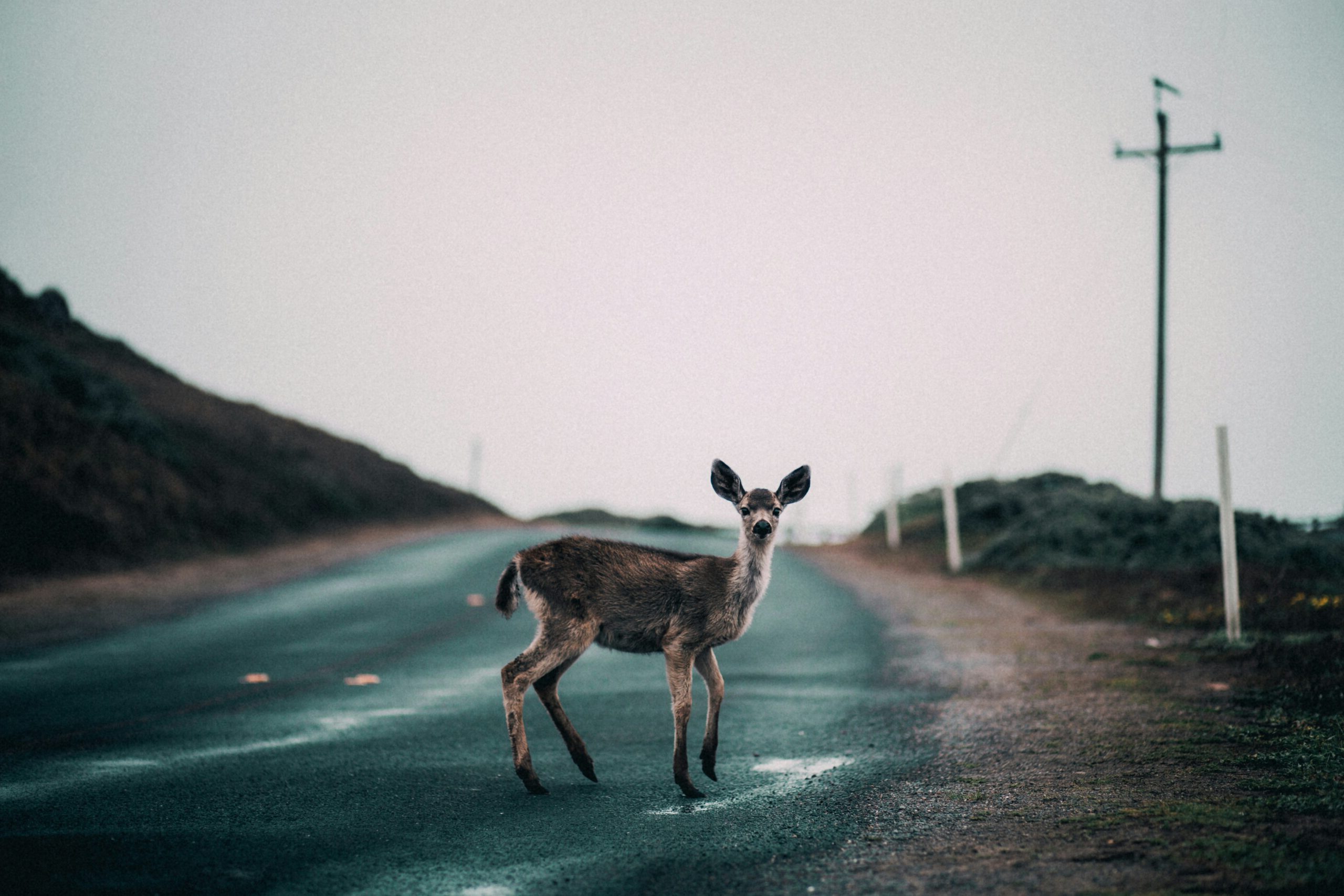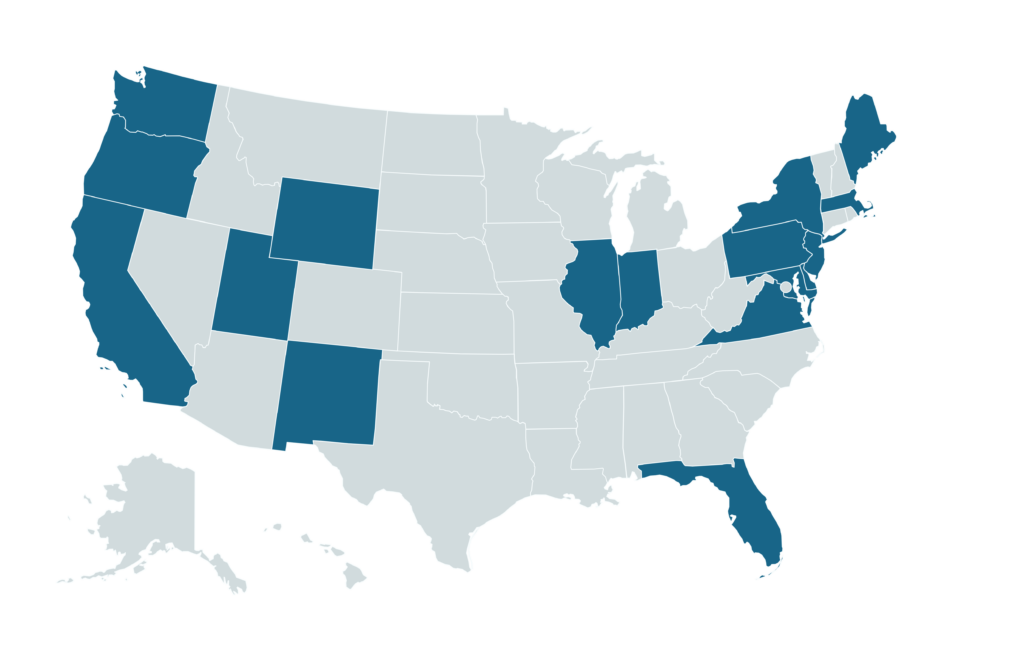
Policy Update
States Are Bridging the Wildlife Habitat Gap with New Funding and Infrastructure in 2024
April 10, 2024
Overview
Bolstered by federal funding and recent state successes, state legislatures are expanding policy efforts in 2024 to reconnect crucial wildlife habitats that have been fragmented by roadways and other human infrastructure. As of April, at least 17 states have introduced 32 bills to improve wildlife habitat connectivity.
Why Habitat Connectivity Matters
Habitat fragmentation inhibits wildlife’s ability to migrate and survive and puts both wildlife and humans in continuous danger. Each year, roadway collisions with wildlife in the U.S. lead to roughly 200 human deaths, 26,000 injuries, $8 billion in costs, and the continued decline of critical wildlife species.
Projects to reconnect fragmented habitats and reduce roadway collisions, such as wildlife crossings, can mitigate the impacts of climate change and improve access to outdoor recreation while effectively paying for themselves through savings on medical expenses, property damage, and the value of wildlife lost.
The 2024 State of Play – Which States Are Moving Bills?
So far in 2024, states are moving habitat connectivity bills related primarily to increasing funding, improving infrastructure and planning, and expanding stakeholder eligibility for habitat connectivity projects. At least 32 bills have been introduced across 17 states, with New Jersey, New Mexico, Utah, Washington, and Wyoming enacting legislation.

New Funding
- New Mexico H.B.2 and Utah S.B.6 appropriate millions of dollars in new funding to help state agencies prevent highway accidents with wildlife.
- Florida passed C.S./S.B.1638 which would dedicate up to $100 million annually from the Seminole Tribe gambling compact for land purchases and conservation easements within the Florida Wildlife Corridor.
- Washington state has enacted two bills into law related to improving funding for habitat connectivity. The first – H.B.2045 – will authorize counties, cities, and towns to accept money or property donations for fish barrier removal. The second – H.B.2134 – appropriates $1 million to the state Department of Transportation to be used as matching funds for the Federal Highway Administration’s wildlife crossings pilot program for wildlife underpasses.
- Wyoming enacted S.F.60 into law which appropriates $1 million from the Wyoming Wildlife and Natural Resource Trust Fund Income Account for projects related to fish passage and fish barrier removal.
Infrastructure and Planning
- Florida H.B.5003 has passed the legislature and would authorize the state’s Department of Environmental Protection to purchase lands that connect specified wildlife refuges and preserves as part of the Florida Wildlife Corridor.
- Maryland S.B.902 and New York S.4198B require various state departments to identify sites along highways that intersect with crucial wildlife habitats and would benefit from habitat connectivity projects.
- New Jersey enacted S.3916 expanding eligibility for wildlife fencing programs to farmers leasing farmland while clarifying eligibility and providing for uniform funding levels for grant recipients.
- Virginia passed H.B.309 which would require the development of a Forest Conservation Plan that identifies forest conservation threats, goals, funding opportunities, and priority areas with the highest priority given to areas adjacent to wildlife corridors or large blocks of forest.
Stay Informed on State Policy With NCEL
Stay up to date on trends in wildlife and habitat connectivity policy across the country this year with NCEL’s Bill Tracking Map.